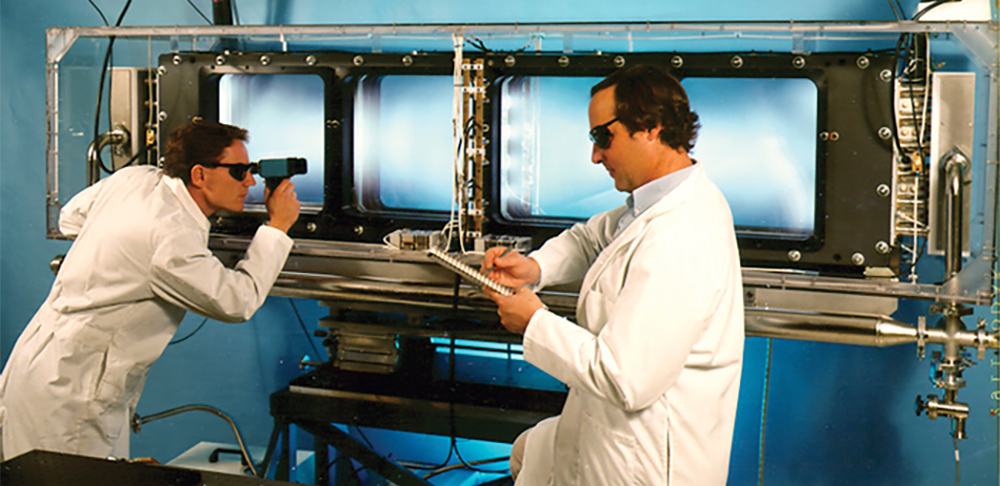Optical Switch

Building the Laser Energy
A key component in the laser chain, an optical switch called a plasma electrode Pockels cell (PEPC), was invented and developed at LLNL. A Pockels cell rotates the polarization of a laser beam when a voltage is applied across an electro-optic crystal. Depending on the voltage applied, the Pockels cell either allows light to pass through or to reflect off a polarizer, creating an optical switch.
For each of NIF’s 192 beamlines, a PEPC allows the laser pulse to make four passes through the main amplifier, building up its energy with each pass. Without this multi-pass configuration, NIF’s beamlines would have to be much longer than they are.
The switch’s four 40-by-40-centimeter apertures contain a crystal plate of potassium dihydrogen phosphate, or KDP, sandwiched between two fused silica windows. What makes the PEPC unique are its plasma electrodes. A conventional Pockels cell applies the switching voltage to metal electrodes that are beside the KDP crystal as the beam passes through it. In the PEPC, two plasma cells are created and used as electrodes, the crystal is sandwiched between the electrode cells, and the beam passes through both electrodes and the crystal.
The plasma, an ionized gas like that found in a fluorescent light bulb, is electrically conductive yet transparent to the NIF laser beam. This configuration allows for uniform switching across a large beam with a much thinner crystal, therefore requiring a much smaller pulsed power system to apply the switching voltage pulse.
Next Up: Preamplifier Modules




